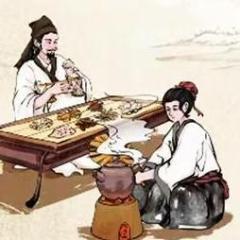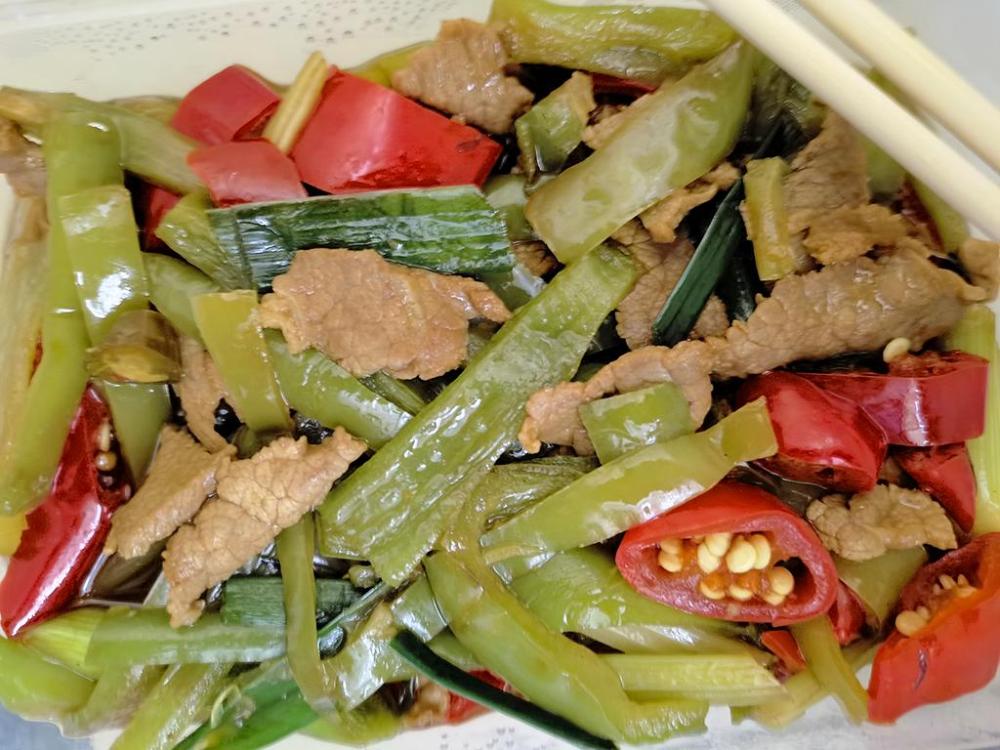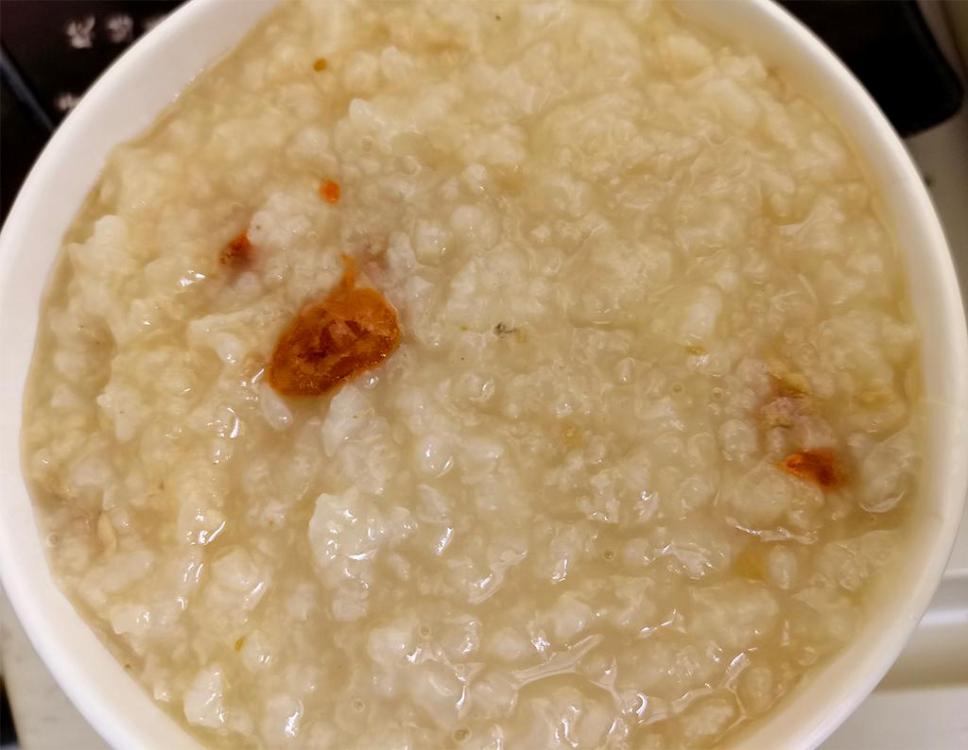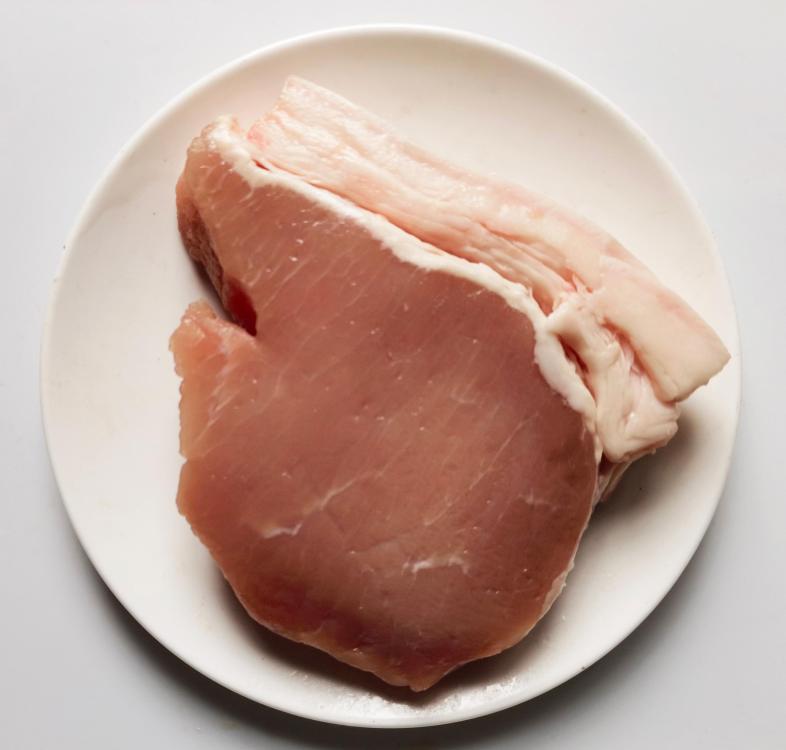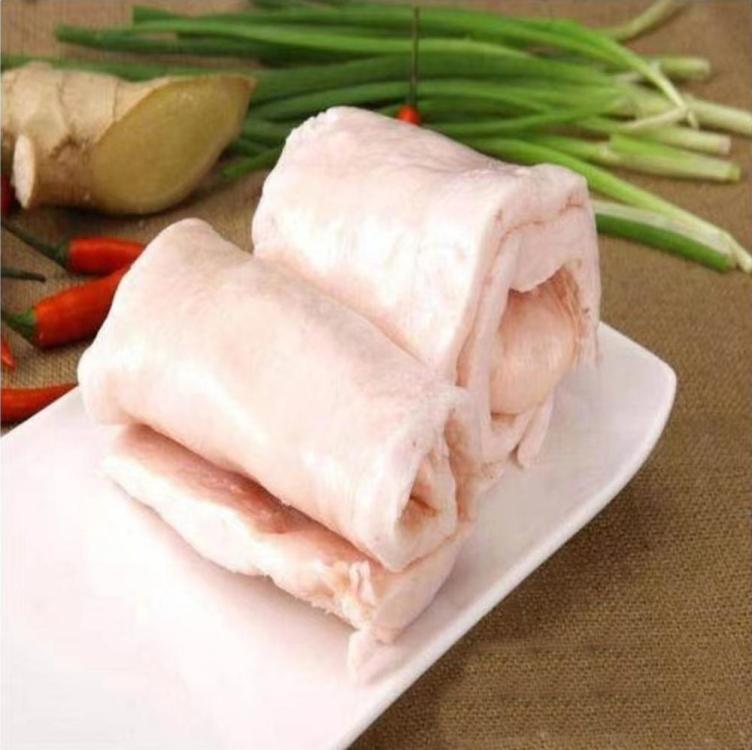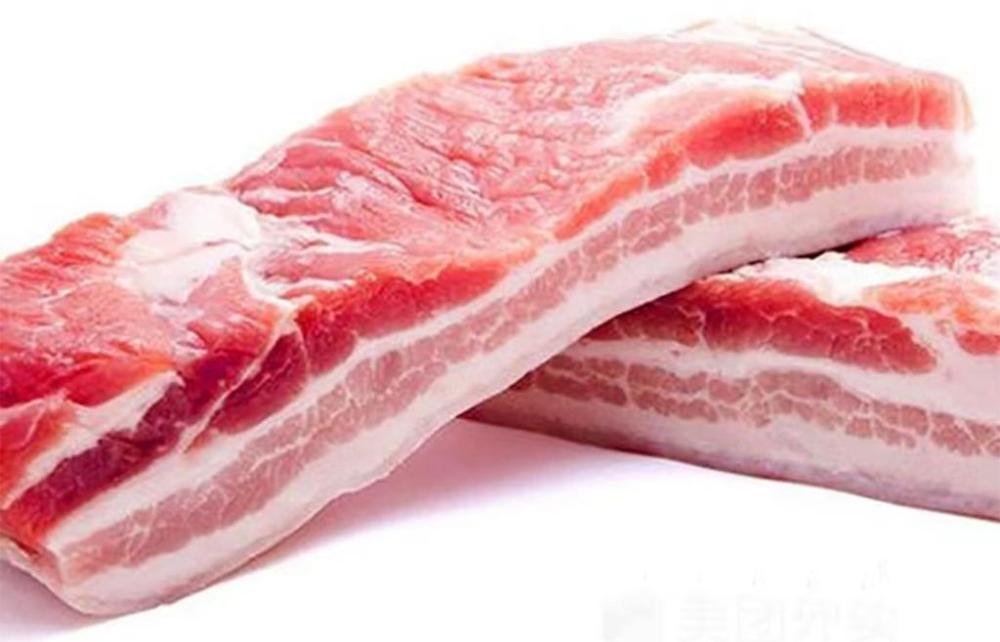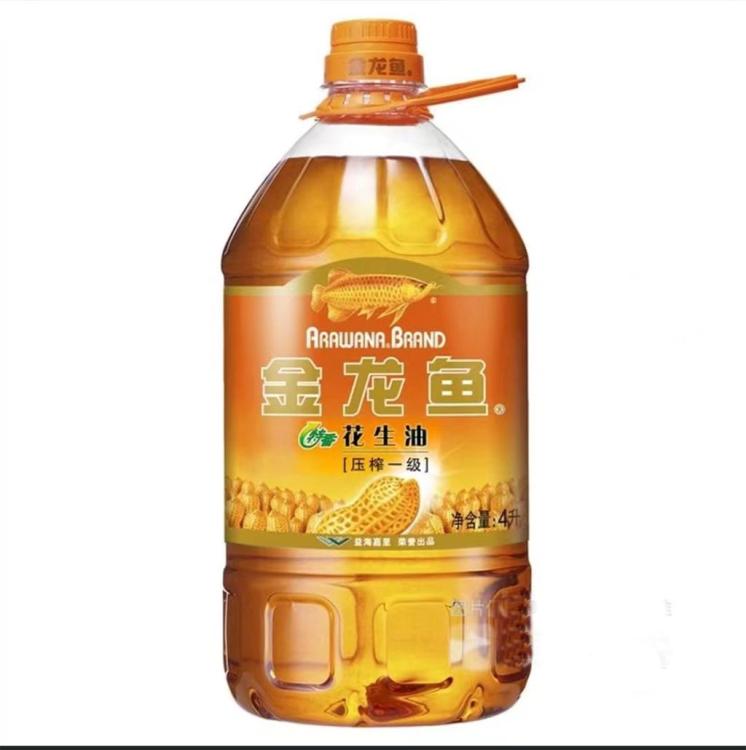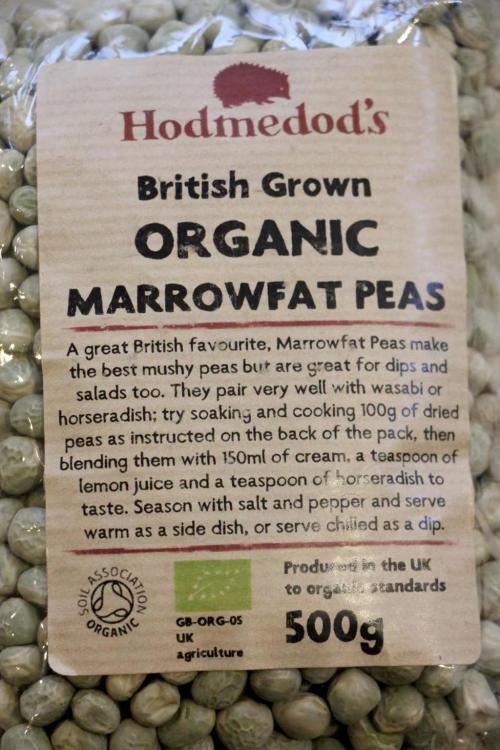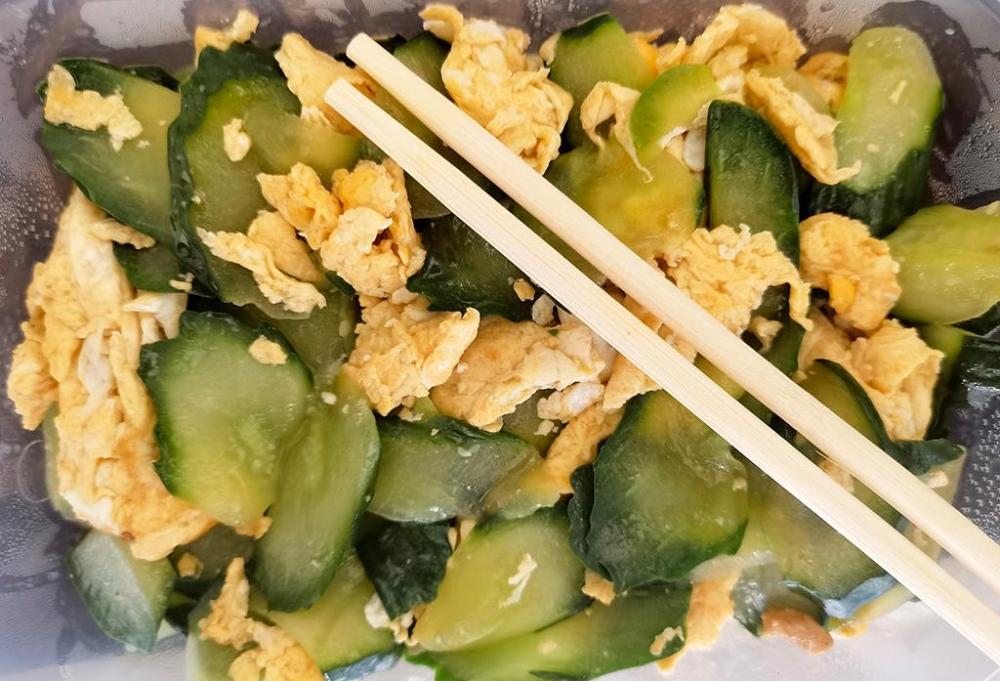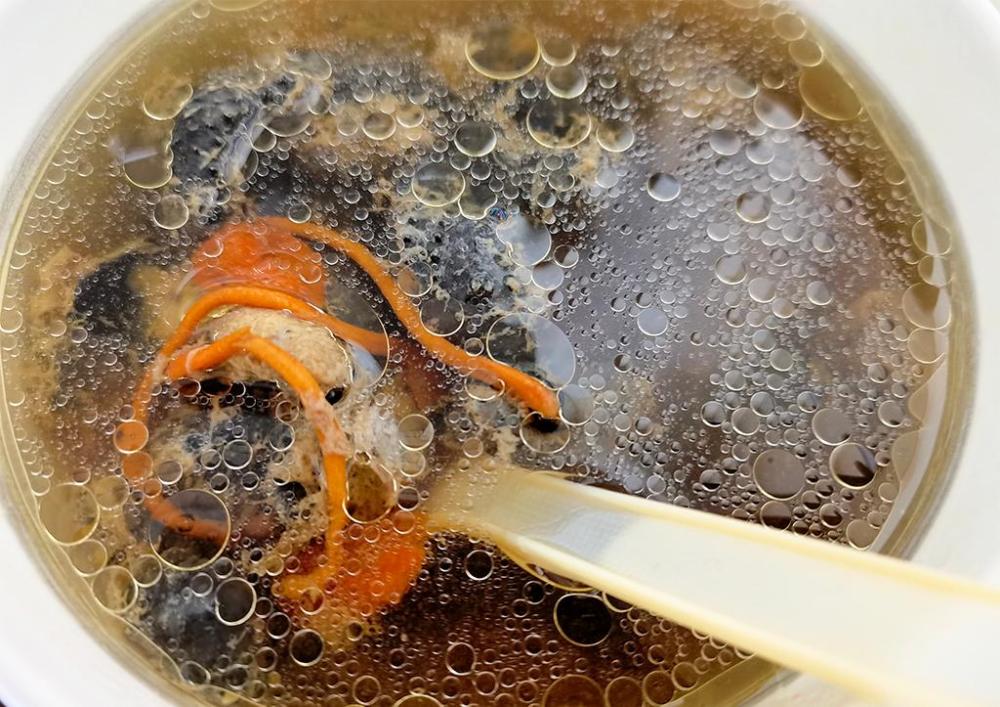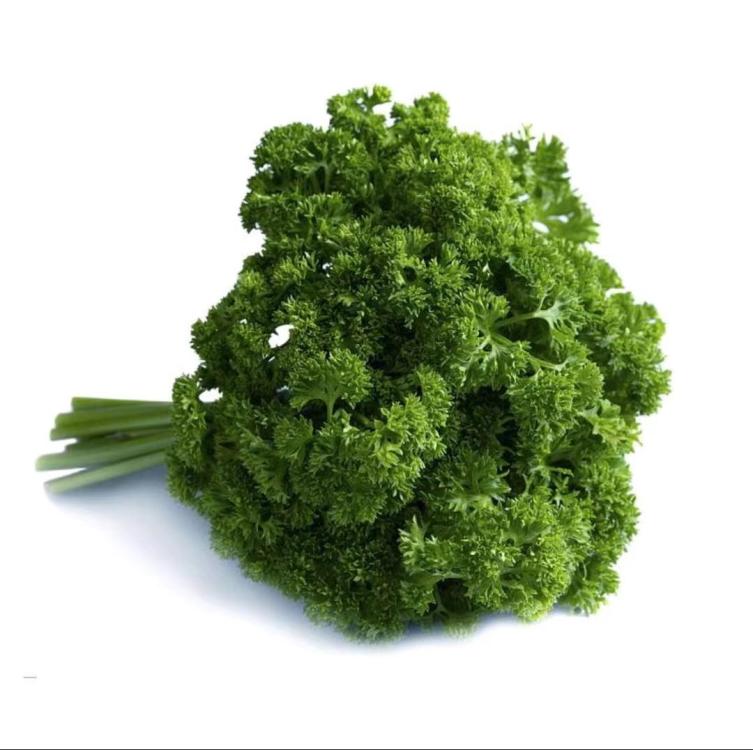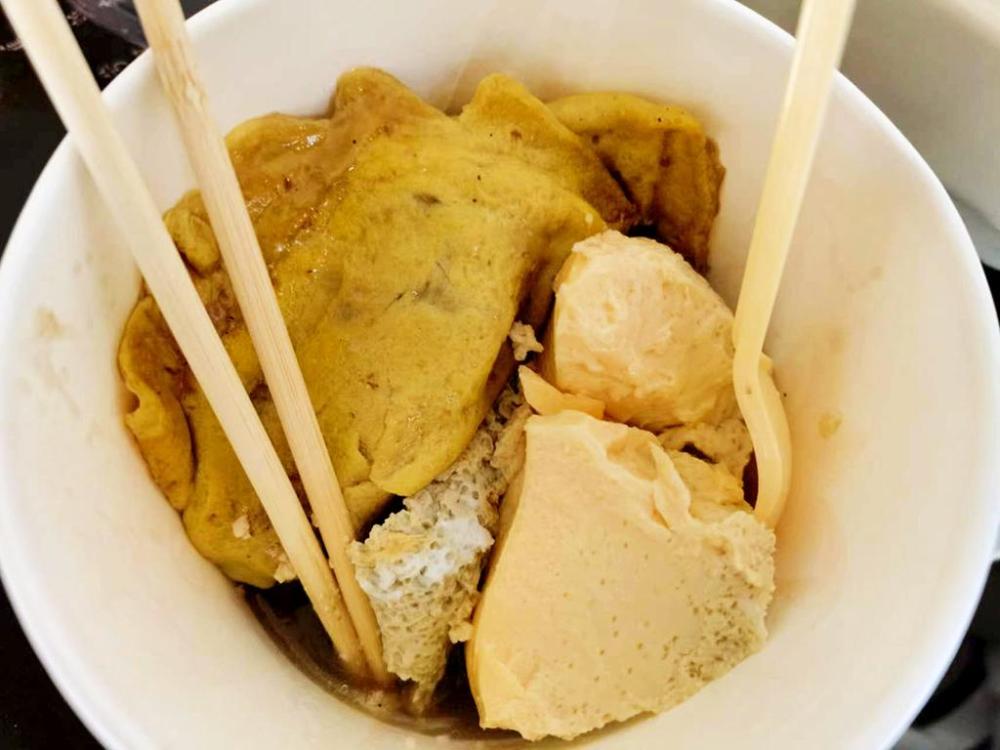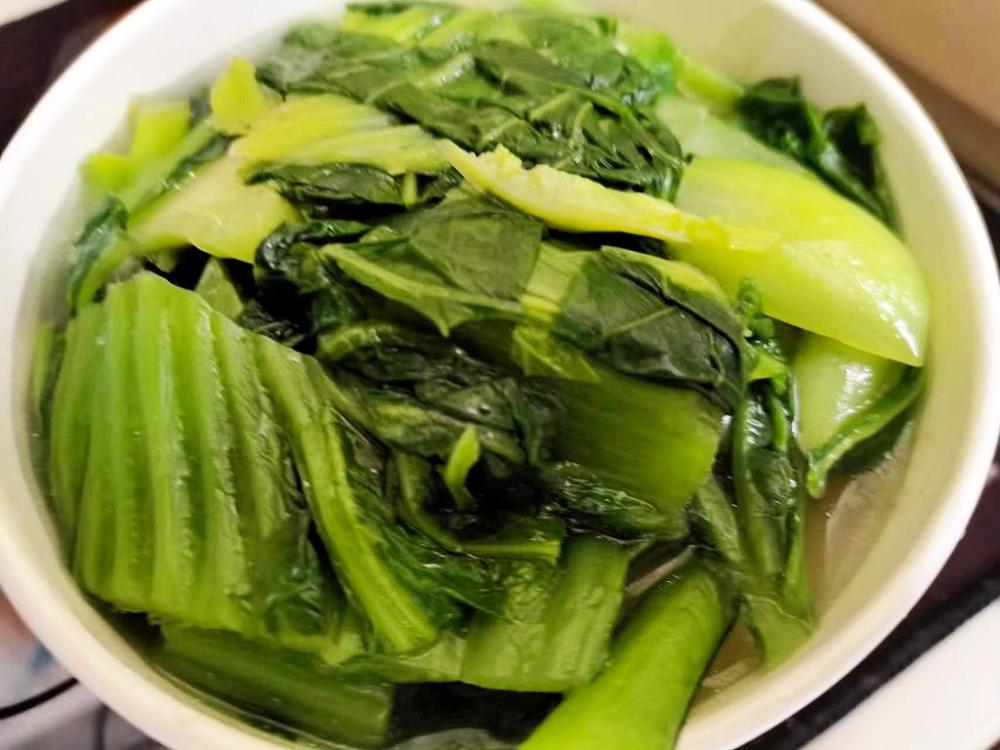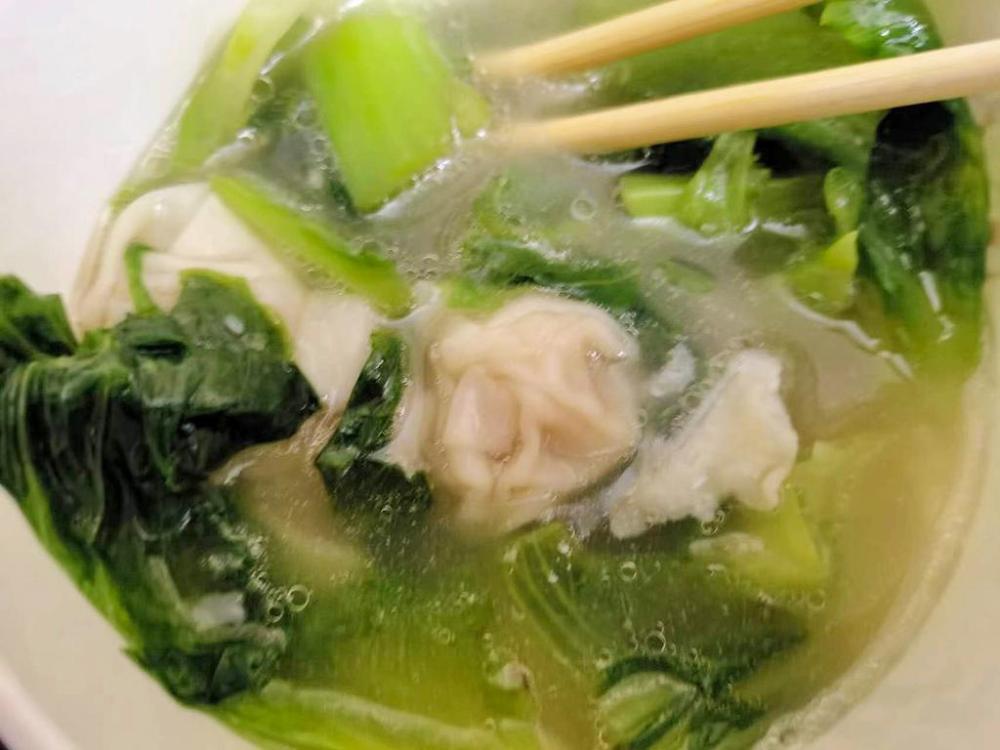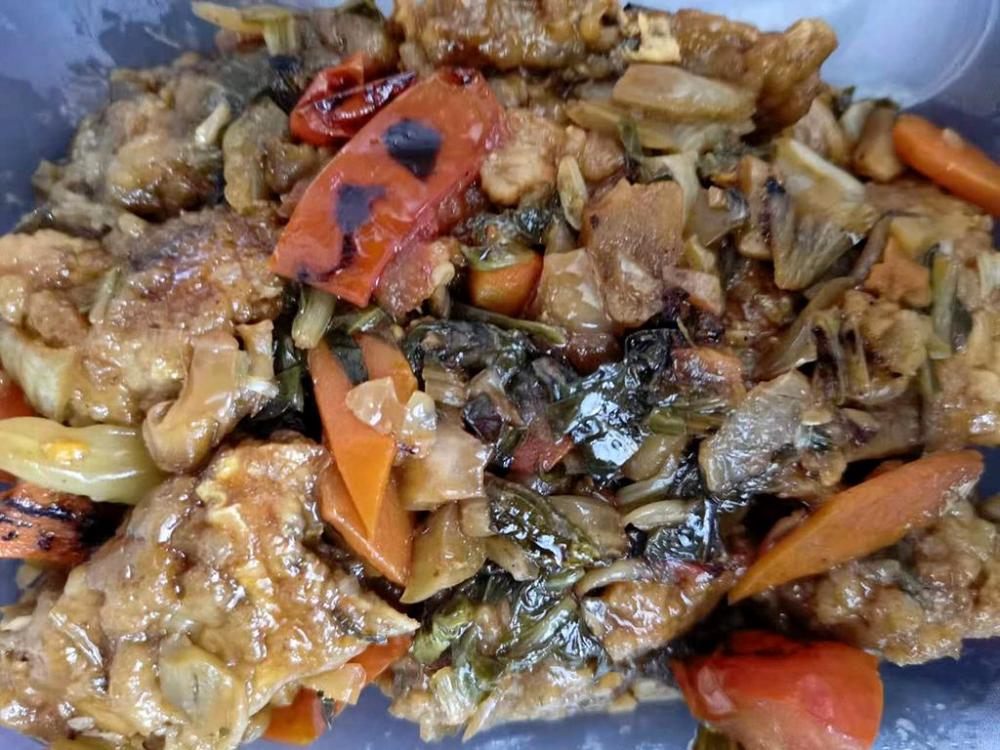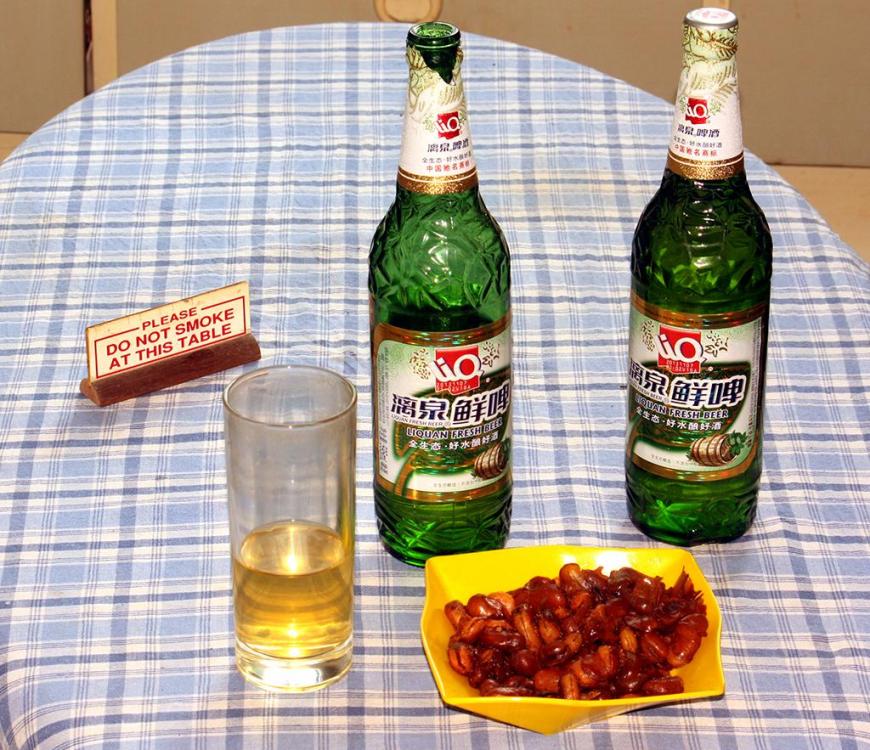-
Posts
16,675 -
Joined
-
Last visited
Content Type
Profiles
Forums
Store
Help Articles
Everything posted by liuzhou
-
They aren't mosquitoes. There are no mosquitoes in Scotland. They are midges, for which Scotland is notorious. https://www.visitscotland.com/travel-planning/midges-ticks-scotland
-
Dinner: 黄鳝粥 (huáng shàn zhōu) - Paddy Eel Congee 青椒牛肉 (qīng jiāo niú ròu) - Green Chili Beef (except it had more red, my preference anyway)
-
They have fences now? Modern life!!
-
As someone who grew up spending a lot of time on an uncle's farm, I feel obliged to point out that although the Highland Cattle may look cute and photogenic, they can be bad-tempered and aggressive. I have the scars to prove it.
-
29.食油 (shí yóu) In some people’s minds, Chinese food is too oily or greasy. I suggest they have never had real Chinese food. Yes, some parts of China favour a more oily preparation – Shanghai for example but I don’t find it excessively so. Other areas are far from greasy. The Chinese are generally unafraid of animal fats, it’s true. The famous Hangzhou dish, 东坡肉 (dōng pō ròu), Dongpo Pork is made from from pork belly that is nearly all fat. However, when well made, it isn’t greasy at all. The fat is meltingly soft and packed with flavour. 东坡肉 (dōng pō ròu) - Dongpo Pork The pork of choice is almost always 五花肉 (wǔ huā ròu) - literally ‘five flower meat’ so named because five layers are visible – two pairs of fat and flesh and finally the skin. 五花肉 (wǔ huā ròu) - Five Flower Pork Belly Even when buying say a piece of pork tenderloin for a lean meat stir fry, it will come with fat. This will be removed and cut into pieces then rendered out to be used to stir-fry the dish and any accompanying vegetables etc. The veg do not pick up any porcine flavours. I have only once seen lard (pig fat) in a supermarket – everyone renders their own. 猪里脊肉 (zhū lǐ ji ròu) - Pork Tenderloin High quality leaf lard (猪板油 - zhū bǎn yóu) from the kidneys is available on-line at reasonable prices of around $2 USD for 500 grams, just over 1 lb. 猪板油 (zhū bǎn yóu) - Leaf Lard* Besides pig fat, various vegetable cooking oils are used. The generic term is 食油 (shí yóu), literally ‘food oil’. The preferred choice is very regional. Although my local stores all carry 大豆油 (dà dòu yóu) soy oil, 葵花油 (kuí huā yóu) sunflower oil, 菜油 (cài yóu) rapeseed oil/canola,, 玉米油 (yù mǐ yóu) cØrn oil and 植物油 (zhí wù yóu) blended anonymous ‘vegetable’ oil, by far the favourite locally is 花生油 (huā shēng yóu) peanut oil. Other areas differ. 化身有 (huā shēng yóu) - Peanut Oil* I differ, too. I prefer the neutral taste and high smoke point of 稻米油 (dào mǐ yóu), aka 米糠油 (mǐ kāng yóu), which is rice bran oil. 稻米油 (dào mǐ yóu) - Rice Bran Oil 橄榄油 (gǎn lǎn yóu), imported olive oil has become available in recent years. I was so excited I took my first selfie holding a bottle just to show friends who had left China appalled at the previous lack of the Mediterranean delight. Unfortunately, what is available is generally of very low quality and is mainly used as a cosmetic by my lady friends. Chinese food never uses it! 橄榄油 (gǎn lǎn yóu) I should also mention 麻油 (má yóu) / 香油 (xiāng yóu) / 芝麻油 (zhī ma yóu), three names for the same thing - sesame oil. This refers to toasted sesame oil and is only ever used as a finishing oil, off the heat, immediately applied to a dish before serving. It is never used for cooking or marinating. It is valued for its scent and favour, both of which are highly volatile and rapidly lost when heated. 芝麻油 (zhī ma yóu) - Toasted Sesame Oil There was a scandal a few years back when some unscrupulous turds were collecting used cooking oil from restaurants and canteens etc, “purifying” it and selling it back to the same restaurants etc as being new. This trade in what is known as 地沟油 (dì gōu yóu) or gutter oil was stamped upon from a great height and people imprisoned for lengthy times and is now thankfully extremely rare. 加油 (jiā yóu), literally ‘add oil’ is yelled at players by sports fans and is the equivalent of ‘Go Go! Go!’ or whatever you shout to encourage your team or favourite sporting star. * Marked images from advertisements on Meituan shopping portal - fair use, but I will replace
-
What @Anna N says. The peas are sold in cans or dried in bags or boxes. I have never used canned - they didn't have them when I lived in the UK, so far as I remember. When I was in the UK last, I bought these. They are still in my cupboard. They last forever. I won't!
-
Skye is beautiful and I want to live in the Oyster Shed. Haven't been for too long.
-
Yes, Indeed. Never fresh peas. Unheard of. Almost sacrilegious. An insult to the finest salmon and to fish and chips.
-
In addition to the egg and tomato, the egg and cucumber and the egg and bitter melon, they also offer egg and green beans and egg and green chilli.
-
It's relatively dry but does have some soy sauce. A very simple dish. Eggs, cucumber and soy sauce.
-
Egg and tomato is by far the most popular, but this is not unusual. 2nd prize. They also offer egg and bitter melon.
-
Dinner: 西芹炒鱿鱼 (xī qín chǎo yóu yú) - Stir-fried squid with celery. Odd pairing, I thought, but it worked. Squid was verging on the chewy though. Still, I expected that.
-
Lunch: 虫草乌鸡汤 (chóng cǎo wū jī tāng) - Cordycep militaris and black bone chicken (silkie) soup. 黄瓜炒蛋 (huáng guā chǎo dàn) - Scrambled egg with stir-fried cucumber
-
28. 祭礼 (jì lǐ) 孔子 (kǒng zǐ) - Confucius Statue in Liuzhou During Mao’s Cultural Revolution (1966-1976 approx), 儒学 (rú xué) -Confucianism was derided as a backward superstition and followers of the philosophy were imprisoned or even killed. Yet its influence remained everywhere. Around 2010, the powers that be in the Chinese Communist Party decided that Confucianism’s paternalism and filial piety was exactly what they needed some of, so they co-opted the philosophy for their own ends, remembering that So they duly started being Confucian, opening Confucian temples all over China, including this one in Liuzhou. They claimed it was built on the site of a former temple, destroyed in the 1960s, but no one believes that and certainly no one remembers it. They held a grand opening ceremony in September 2010 The Confucian disciples were students from the nearby university dressing up for the day, but we did get the surreal sight of the Liuzhou Party Chief sacrificing his dignity by bowing to the superstition that would have had him killed 40 years earlier. The ritual of dedicating the temple also involved non-voluntary sacrifice, known in Chinese as 祭礼 (jì lǐ) – ritual sacrifice. A pig is slaughtered and its head put up for Confucius to presumably dine on from beyond the grave. In case the pig gets lonely, a cow is given the same treatment. Pig’s heads (猪头 - zhū tóu) are not uncommon. Millions of pigs are slaughtered every day in China and they all have heads. Usually parts of the head, cheeks, brain, ears, snout, lips etc. are sold separately (some members may remember Cameron’s face), but at festivals such as New Year etc, a whole head may be braised and served for a feast. I’ve never seen the cow’s head served up in a similar fashion. The head is shaved, blow-torched, washed and blanched, then a slow braise with copious spices and aromatics: ginger, chilli pepper, bay leaf, cassia bark, star anise, Sichuan peppercorns, 13-spice powder, rice wine, sugar, salt, light soy sauce and dark soy sauce. After about an hour, it is ready to eat, but the meat is often removed and fried with other ingredients. An earless* 3 kg / 6 lb head costs around $10 USD. Ears are sold separately.
-
I often make stovies here in China. Scottish comfort food. They've popped up on the Dinner topic from time to time. I also like cullen skink, but have never made it.
-
Stirling Castle is much more interesting than Edinburgh's.
-
27. 牛筒骨 (niú tǒng gǔ) I was thinking about this and the fact that, although very popular, it only ever appears in restaurants; almost never home cooked, never available in the stores. And I was wondering why when the ‘don’t be an idiot; you know why’ light came on. 牛筒骨 (niú tǒng gǔ) literally means ‘beef tube bone’. It is, of course, marrow bone. And the locals love it – as do I. What we are talking is roast bone marrow. And the reason it’s restaurant only, is that so few people have ovens. Almost no one. I do, but for a long time I was unable to source the bones. Seemed they were all reserved for the restaurant trade. My favourite mini-chain 哈尔滨架子王 (hā ěr bīn jiǎo zi wáng) - Harbin Jiaozi King restaurants serve up steaming plates of marrow and dispense plastic gloves for the handling of bones. They do mean jiaozi (dumplings), too. Recently, I have been able to acquire the bones online (750 grams / $3.59 USD). The essential parsley is more expensive at $3.77 for a mere 250 grams!
-
Many were the happy hours I spent in The Last Drop in my 20s. I last visited in 2018, very much no longer in my 20s. You have already seen the best of the castle. Formidable from the outside, dull inside.
-
Some meals over the last couple of days or parts thereof. This is 皮蛋肉粥 (pí dàn ròu zhōu)- century egg and pork congee. Unusually for me, I had this as part of lunch today. And enjoyed it. They're pushing me to upping my protein, so 蒸蛋饺 (zhēng dàn jiǎo) steamed dumplings with egg wrapper and 清蒸芙蓉蛋 (qīng zhēng fú róng dàn) steamed egg. This looked like a bowl of greenery 青菜 (qīng cài), but then I remembered ordering it. Under that forest of greens lie hidden wontons 云吞 (yún tūn) in broth. Dinner tonight was called 酸菜焖鱼 (suān cài mèn yú) braised fish with pickled cabbage. This was unlike any 酸菜焖鱼 I've ever experienced, but was OK. Served with rice. Roll on tomorrow.
-
The Guardian has today published a selection of food-related Christmas gifts at various price points. It is very British. There are several items there I woudn't complain about receiving; I'm less sure about giving. Few of my friends woud be looking for food related gifts. (They do have other redeeming qualities.) What food-related gifts would you be likely to give or want to receive this year? From this list or otherwise. I fancy the mushroom playing cards big time. I'm cheap! I suggest you get together and make one big parcel to send to me. The postage to China will be more affordable shared 😁. I have ordered a bunch of outsized cooking chopsticks for everyone!
-
I'm no trifle maker but my mother always used hard ladyfingers in her trifles. Sponge cake would have turned to mush. She learned from my very British paternal grandmother. Sounds to me like @ElsieD's recipe is short on liquid.
-
26. 漓泉啤酒 (lí quán pí jiǔ) Beer is not, of course, traditional in China’s culture but its use and production has grown exponentially over recent years. 青岛啤酒 (qīng dǎo pí jiǔ) Tsingtao (Qingdao is the modern transliteration) is at least the spiritual home of beer in China. Set up by the Anglo-German Brewery Co Ltd, in 1903, during the time of foreign control known as the Unequal Treaties period. The brewery fell into Japanese hands between 1914 and 1922 when it became Chinese owned until World War II, when Japan took control again until 1945. The company was eventually nationalised by Mao after the communist takeover in 1949. It is now largely owned by the Chinese state and Asahi Beer. First exported in 1954, it is China’s most widely exported beer, being available in 90 countries. It remains very popular domestically, too. But it isn’t the only beer by a long shot and it isn’t the most popular in Guangxi. That is, without question, 漓泉啤酒 (lí quán pí jiǔ), Liquan Beer, brewed in Guilin and named after the River Li which flows through that city. It has an 80% market share in Guangxi. Like almost all beer in China, it is a light lager, coming in various strengths from 5 - 11% alcohol. Originally operated by a joint venture Chinese-Austrian company, it is now owned by Beijing Yanjing Beer Group, China’s largest. Until recently, the brewmaster was a German national. Probably the most popular in their range is ‘1998 Liquan’. This is not a vintage, but the beer is so named in honour of a certain Bill Clinton, who visited Guilin in that year. Liquan beer is considered to be the only suitable beer for Yangshuo’s beer fish dish, with both the water for the beer and the fish coming from the same river. When I first came to Liuzhou, there was a local brewery making 鱼峰啤酒 (yú fēng pí jiǔ ), named after a local landmark. The stuff was foul, weak and smelled of formaldehyde. I heard one person rudely and disparagingly refer to it as ‘peasant’s beer’ meaning only a poor peasant would buy it. It was very cheap. The peasants have better taste. The brewery closed twenty plus years ago. The main problem I had in the early days was getting a chilled beer. Chinese men are happy to drink the brew lukewarm. With summer temperatures heading for the 40℃s, I need my beer ice cold. Fortunately, after years of training, they are catching on and I have no trouble scoring some chilled refreshment. That said, I mainly drink beer at home. I don’t like drinking in Chinese company. Most people treat beer drinking as a competitive sport with drinking games and endless toasts. The first question you will be asked is “How many bottles can you drink?” I now refuse to play.


